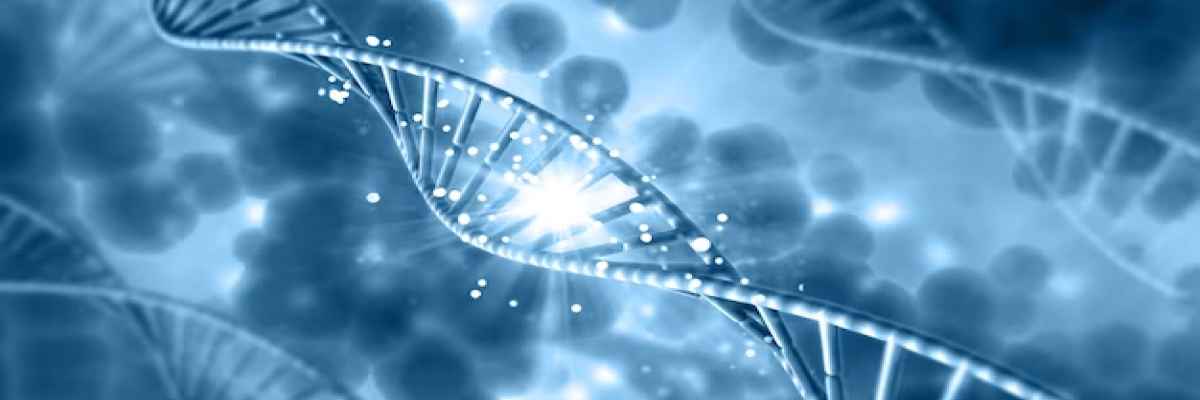Attention-deficit/hyperactivity disorder (ADHD) is a neurodevelopmental disorder that affects millions of people worldwide. It is characterized by hyperactivity, impulsivity, and inattention, which can significantly impact a person's daily life. Understanding the neurobiological basis of ADHD is crucial in developing effective treatment strategies for those living with this condition. This article provides a comprehensive overview of the neurobiological basis of ADHD, including the latest research findings and potential future directions.
Genetic Factors
ADHD is known to have a significant genetic basis, with heritability estimates ranging from 70-80%. Studies have identified several candidate genes and genetic variations that are associated with the disorder. These genes are involved in the regulation of neurotransmitters such as dopamine, norepinephrine, and serotonin, which play essential roles in attention and behavior.
Some of the most extensively studied genes associated with ADHD include DAT1, DRD4, and DRD5. These genes regulate dopamine signaling, which is known to be disrupted in individuals with ADHD. Variations in these genes have been linked to differences in dopamine receptor density, transporter activity, and other factors impacting dopamine function.
Other genes associated with ADHD include ADRA2A, which regulates norepinephrine signaling, and HTR1B, which regulates serotonin signaling. Variations in these genes have also been linked to differences in attention and behavior.
However, it is essential to note that the genetic basis of ADHD is complex and involves many different genes and genetic variations. In addition, gene-environment interactions are also thought to play an essential role in the development of ADHD. For example, exposure to environmental toxins, maternal smoking during pregnancy, and other factors may interact with genetic vulnerabilities to increase the risk of ADHD.
Overall, a better understanding of the genetic basis of ADHD can help to inform the development of more targeted and effective treatments for the disorder. By identifying specific genes and genetic variations associated with ADHD, researchers can gain insights into the underlying neurobiology of the disease and develop new interventions that target specific aspects of brain function.
Neurotransmitter Systems
ADHD is a neurodevelopmental disorder characterized by inattention, hyperactivity, and impulsivity. While the exact causes of ADHD are not fully understood, there is strong evidence that imbalances in neurotransmitter systems play a significant role. Two neurotransmitters that are particularly implicated in ADHD are dopamine and norepinephrine.
Dopamine is a neurotransmitter that plays a critical role in reward processing, motivation, and attention. Research has shown that individuals with ADHD have lower dopamine levels in certain brain parts, particularly the prefrontal cortex. This may contribute to symptoms such as inattention and poor impulse control. Norepinephrine is another neurotransmitter that is involved in attention and arousal. It is particularly important for sustained attention and working memory. Research has suggested that norepinephrine dysfunction may be linked to ADHD symptoms such as hyperactivity and impulsivity.
In addition to dopamine and norepinephrine, other neurotransmitter systems have also been implicated in ADHD. For example, research has suggested that serotonin dysfunction may contribute to symptoms such as emotional dysregulation and impulsivity. Glutamate, which is involved in learning and memory, may also play a role in ADHD.
Understanding the dysregulation of these neurotransmitter systems in ADHD is essential for developing effective treatments. Medications such as stimulants and non-stimulants target these systems to improve attention and reduce hyperactivity and impulsivity. However, it is essential to note that drugs are ineffective for all individuals with ADHD, and non-pharmacological interventions such as behavioral therapy may be beneficial.

Brain Structure and Function
ADHD has been associated with structural and functional abnormalities in various brain regions. The prefrontal cortex, basal ganglia, and cerebellum are some critical regions implicated in ADHD. The prefrontal cortex is involved in executive functions such as attention, inhibition, and working memory, which are impaired in individuals with ADHD. The basal ganglia regulate movement, motivation, and reward processing, which are also affected by ADHD. The cerebellum plays a role in motor coordination and attention as well.
Studies have identified several structural and functional differences in the brains of individuals with ADHD compared to those without. These differences include reduced gray matter volume in specific brain regions, altered patterns of activation in response to cognitive tasks, and disrupted connectivity between different brain regions. For instance, the prefrontal cortex and basal ganglia are found to have reduced volumes in individuals with ADHD, and functional imaging studies suggest that they may have decreased activation during tasks that require attention and inhibition.
Understanding the neurobiological basis of ADHD can provide insights into its etiology and inform the development of more effective treatments. In particular, research on brain connectivity has shown promise in identifying biomarkers that could help diagnose and monitor ADHD, as well as guide targeted interventions.
Environmental Factors
ADHD is a neurodevelopmental disorder that affects an estimated 5-10% of children and 2-5% of adults worldwide. While genetics and biology are significant factors contributing to ADHD, environmental factors can also play a crucial role in its development. This article will explore the impact of ecological factors on ADHD, such as prenatal exposure to toxins and maternal stress. The article will also discuss the role of parenting and family environment in ADHD and how these factors may interact with genetics and biology to contribute to the disorder's development. Understanding these environmental factors and their interactions with other factors can help individuals with ADHD and their families make informed decisions about treatment and management.
Treatment Implications
Treatment for Attention Deficit Hyperactivity Disorder (ADHD) involves a combination of pharmacological and non-pharmacological interventions. Stimulant medications such as methylphenidate and amphetamines are commonly prescribed for ADHD, as they increase the availability of dopamine and norepinephrine in the brain. Other medications, such as atomoxetine and guanfacine, act on other neurotransmitter systems involved in ADHD.
Non-pharmacological treatments for ADHD include behavioral therapy and neurofeedback. Behavioral therapy teaches individuals with ADHD new skills and strategies to improve their executive functioning and self-regulation. Neurofeedback is a form of biofeedback that involves training individuals to modulate their brain activity in specific regions associated with ADHD symptoms.
It is important to note that individual differences in treatment response exist, and not all individuals with ADHD will respond equally to the same treatment. Personalized treatment plans that consider an individual's specific symptoms, the severity of ADHD, and comorbidities are often more effective. Additionally, a combination of different treatments may be necessary to address the complex and multifaceted nature of ADHD.
In conclusion, ADHD is a complex disorder with a variety of neurobiological and environmental factors that contribute to its development. Understanding the underlying mechanisms of ADHD is crucial for developing effective treatments and interventions for individuals with this condition. Through research on genetic factors, neurotransmitter systems, brain structure and function, environmental factors, and treatment implications, we can gain a more comprehensive understanding of ADHD and provide better support for those affected by it. With this knowledge, healthcare professionals can work to develop personalized treatment plans for individuals with ADHD that take into account the unique biological and environmental factors contributing to their condition.

